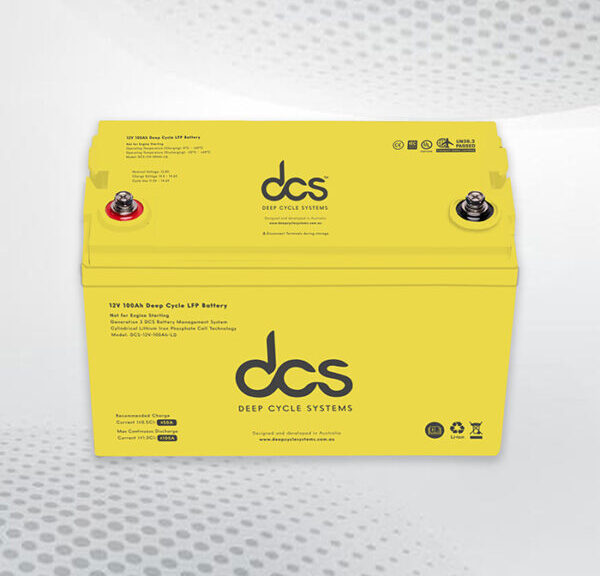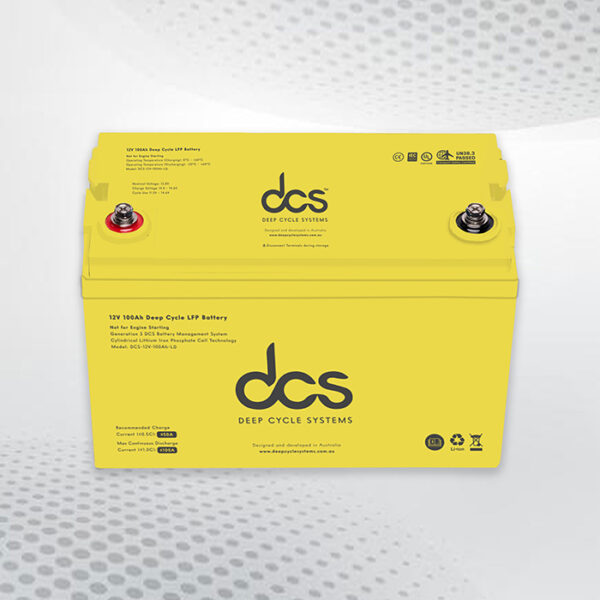
Unlocking the Manufacturing Secrets of a 12v 200ah Battery
Understanding the construction of everyday items we take for granted is often fascinating. For instance, a 12v 200ah Battery is a prevalent power source used in various applications. But have you ever wondered how such a crucial component is manufactured? In this blog post, we’ll be peeling back the curtain to reveal the manufacturing secrets of a 12v 200ah battery.
Understanding the Basics of a 12v 200ah Battery
When we talk about a 12v 200ah battery, we’re referring to a battery system that operates at 12 volts and can deliver 200 ampere-hours of energy. This kind of lead-acid battery often powers solar energy systems, recreational vehicles, marine equipment, and even as a backup energy source.
The battery’s capacity, measured in ampere-hours, is not just about the energy it can store but also how it does so. Factors like the physical size of the battery, the surface area of its plates, the thickness of these plates, and the amount of electrolyte it contains all play a crucial role in determining the energy storage capacity of a 12v 200ah battery.
Raw Materials and Pre-Manufacturing Steps
The first step towards manufacturing a 12v 200ah battery is procuring high-grade raw materials. These raw materials are lead ingots, lead oxide, sulfuric acid, plastic for crafting the casing, and separators. Before manufacturing begins, these materials are subjected to rigorous testing to identify and eliminate any impurities.
This is to ensure that every material used aligns with the set quality standards, thereby contributing to the consistent performance of the finished product. After testing, the raw materials are meticulously measured and weighed.
These critical pre-manufacturing steps ensure that the precise proportion of each material is used in the manufacturing process, which is fundamental to maintaining uniformity in the performance and quality of every 12v 200ah battery produced. Once the proportions are accurately determined, the manufacturing process begins by creating the battery’s internal structure, starting with forming the lead plates.
The Intricate Process of Plate Making
Creating the plates is an essential part of constructing a 12v 200ah battery. This process commences with producing a special paste, a combination of lead oxide, water, and sulfuric acid. Once mixed, this paste is carefully pressed into the grid. These grids, now filled with the specially crafted paste, undergo a curing process in a custom-built oven.
The heat in the oven hardens the paste, which then solidifies into the plate. This process is particularly significant because these plates will be the primary components of the battery where electrical energy storage occurs. It’s a meticulous and exact procedure, requiring the utmost attention to detail to ensure each plate is formed correctly, preparing it for its vital role in the battery’s operation.
After the formation of the plates, the next critical stage is their submersion into a bath of sulfuric acid, initiating the process known as ‘formation’. This stage involves a complex chemical reaction that further strengthens the plates and primes them for long-lasting energy storage.
Assembling the 12v 200ah Battery
At this manufacturing phase, the various components – positive plates, negative plates, and separators – are systematically arranged in the 12v 200ah battery casing. These components are positioned in an alternate pattern, with separators positioned between each plate, acting as insulators to avoid short circuits. After carefully positioning these crucial components, the top part of the battery is tightly secured, ensuring the internals are firmly held in position.
This sealing mechanism plays a pivotal role in maintaining the internal integrity of the battery, contributing to its overall functionality and performance. Once sealed, the battery undergoes an electrolyte-filling process, imbuing the device with its potential for electrical storage and discharge. Following this, stringent quality control checks are implemented to ensure top-notch reliability and longevity

Quality Assurance and Final Inspection
The production process of a 12v 200ah battery reaches an essential milestone in the quality assurance and final inspection stage. Rigorous checks and evaluations ensure each battery adheres to the highest quality standards. Each battery is visually inspected for physical flaws, and its weight is confirmed to match the production specifications.
The quantity of electrolyte present in each battery is also checked, ensuring an appropriate balance. During this process, a keen eye for detail is vital. Any batteries that fail to meet these stringent standards don’t pass muster and are taken off the production line for rectification or disposal. This step in the manufacturing process is crucial in guaranteeing that every 12v 200ah battery that reaches the consumer performs optimally and safely.
Furthermore, batteries undergo electrical performance tests to evaluate their capacity, voltage, and internal resistance, ensuring they deliver a reliable and long-lasting performance. This phase helps manufacturers identify potential inconsistencies, paving the way for further improvements in production standards.
Testing the Performance of 12v 200ah Battery
Ensuring the reliability and performance of each 12v 200ah battery before it leaves the factory is a crucial aspect of manufacturing. This is done through several rigorous testing stages to scrutinize the battery’s performance under different conditions. One such test is the capacity test, where the battery’s discharge and recharge capabilities are assessed to verify it can provide the specified 200ah of energy.
Next is the high-rate discharge test, conducted to ascertain the battery’s durability under high-load conditions. Then comes the floating charge test, examining the battery’s ability to hold a charge when not under load. Lastly, the overcharge test evaluates the battery’s resilience against excessive charging.
All these tests are performed to certify that the batteries deliver their specified power output consistently, withstand the rig ours of use, and adhere to safety standards. These comprehensive performance tests assure customers they’re investing in a reliable, high-quality product.
Testing and Packing the Final Product
Once a 12v 200ah battery successfully navigates the extensive performance tests, it is then prepared for the final stages of its journey to the consumer. The process begins with meticulous cleaning, where any traces of leftover acid on the battery are carefully removed to ensure a clean and safe product.
Next, the battery’s terminals are shielded, protecting them from potential damage during Handling or transportation. The battery is then encased in a protective film, adding another layer of safety. The packaging is more than just a wrapper; it is a preventative measure designed to keep the product in optimum condition.
This careful preparation ensures that the battery reaches the final inspection stage in its best form. It’s a detailed process that focuses on delivering a product that meets performance standards and maintains its pristine condition from factory to customer.
Packaging and Shipping Considerations
The packaging stage of a 12v 200ah battery is an intricate process that demands attention to detail. Each battery is usually placed within strong and durable cartons or on wooden pallets, which are then further secured to minimize the risk of any damage during transportation. Given the considerable weight of each 12v 200ah battery, the chosen packaging materials must be robust and able to withstand this weight without compromising the battery’s safety.
The ultimate aim is to ensure the battery’s integrity is preserved from the point of packaging, through transportation, and when it reaches the customer’s hands. It’s an operation that calls for precision, careful planning, and reliable materials, all working harmoniously to safeguard the battery during its journey.
Beyond this, incorporating comprehensive labelling and detailed shipping guidelines plays a pivotal role in eliminating the risk of mishandling during logistics. Therefore, meticulous logistical strategies are equally crucial in maintaining the integrity of the 12v 200ah battery during transit.
Shipping and Handling of the 12v 200ah Battery
The transportation of a 12v 200ah battery involves meticulous procedures due to its hefty weight and the hazardous nature of the components, such as lead and acid. The specific shipping procedures and labels, adhering to regulations set for hazardous materials, are essential components of the shipping process.
Freight carriers must exercise utmost care during handling to avoid potential damages or leaks that could lead to serious safety issues. This careful attention to shipping and handling protocols ensures the batteries arrive safely at their destination, preserving their condition and performance.
Additionally, these protocols aid in minimizing environmental impact while complying with global and regional regulatory standards, fostering sustainable business practices in the battery manufacturing industry.
Shipping and Distribution Challenges
Shipping and distribution of the 12v 200ah battery has its challenges. Inclement weather can directly impact battery performance during transport. Additionally, despite the robust packaging and rigorous shipping protocols, the potential for damage during transit still exists.
Delays at customs can also pose significant challenges, causing setbacks in delivery timelines. To combat these potential issues, manufacturers must have proactive strategies in place. Partnering with seasoned logistics providers who are well-versed in handling such commodities can greatly enhance the efficiency and safety of transportation.
Furthermore, manufacturers can boost customer confidence and satisfaction by offering comprehensive after-sales services, ensuring any unforeseen issues that arise post-purchase are promptly and effectively addressed. For example, providing guarantees, repairs, and returns to customers is an integral part of the customer experience. Adopting technologies such as Iota can help in predictive maintenance, reducing potential battery faults before they become critical problems.
FAQs
Q: What is a 12v 200ah battery used for?
A: These batteries are commonly used in solar power systems, recreational vehicles, marine equipment, and as backup energy sources.
Q: What raw materials are used to manufacture a 12v 200ah battery?
A: The primary raw materials include lead ingots, lead oxide, sulfuric acid, and plastic for the casing and separators.
Q: What is the purpose of the plate-making process?
A: The plate-making process is essential because the plates are where the electrical energy storage happens in the battery.
Q: What tests are conducted to ensure the battery’s reliability and performance?
A: Various tests are done, including capacity, high rate discharge, floating charge, and overcharge tests.
Q: What measures are taken to ensure safe shipping and Handling?
A: Rigorous shipping protocols are followed, including specific procedures and labels for hazardous materials. Also, freight carriers must be particularly cautious when handling these batteries.
Conclusion
Manufacturing a 12v 200ah battery is a complex process involving meticulous steps and rigorous quality checks. The journey from raw materials to the final product requires precision, care, and a deep understanding of the product’s specifications. The journey continues beyond the factory; the batteries face shipping and distribution challenges that necessitate careful packaging and Handling to ensure they reach customers in optimal condition. This intricate process underlines the importance of every single battery, contributing significantly to the overall functionality and longevity of various applications.